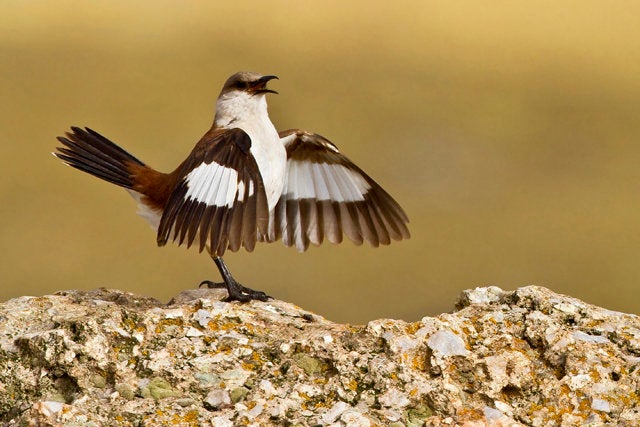Instead of an insult, perhaps the phrase "bird-brained" should be a compliment. Particularly if the brain in question belongs to a Goffin cockatoo, a.k.a. Cacatua goffini.
Captive Goffin cockatoos have been observed making and using tools to solve tricky problems. And now a series of experiments has shown that the birds can learn how to make and use the tools simply by watching other cockatoos.
"This is the first controlled evidence for the social transmission of an original tool use event in any bird so far," Stefan Weber, a student at the University of Vienna's department of cognitive biology and a co-author of a new paper about the research, said in a written statement.
For the experiments, researchers from the University of Vienna, the University of Oxford, and the Max Planck Institute in Germany observed a series of cockatoos that had been presented with a tasty nut just out of reach behind a wire screen, along with a wooden stick long enough to be used to rake in the treat. A cockatoo named Figaro, which years earlier had figured out how to use a stick in that fashion, served as the inspiration for the experiment.
Cockatoos with no prior experience using tools were allowed to watch Figaro use a stick to reach the nut and were then presented with the same challenge.
What happened? The birds proceeded to use the stick to get at the treat just as Figaro had. All three of the males in the group acquired "proficient tool use," the authors say. Interestingly, none of the female birds did.
Remarkably, the birds not only imitated Figaro's technique but built upon it, devising more efficient methods to get the nut.
"This means that although watching Figaro was necessary for their success, they did not imitate his exact motor activities," lead author Dr. Alice Auersperg, a cognitive biologist at the University of Vienna, said in the statement. "Successful observers seemed to attend to the result of Figaro's interaction with the tool but developed their own strategies for reaching the same result, rather than copying his actions."
In other experiments, the cockatoos were observed whittling their own sticks off blocks of wood, after seeing Figaro do the same.
Speaking to the BBC, however, Prof. Richard Byrne, an expert in cognition at the University of St. Andrews in Scotland, offered an alternative explanation for the cockatoos' acquisition of tool use.
"[It could just be] trial and error learning," Byrne said, whereby the birds are more likely to interact with an object because they see other birds doing the same thing.
The paper was published in the September 3 issue of the Royal Society journal Proceedings B.
WATCH Figaro and the other birds' techniques, above, and the tool-making itself, below:

